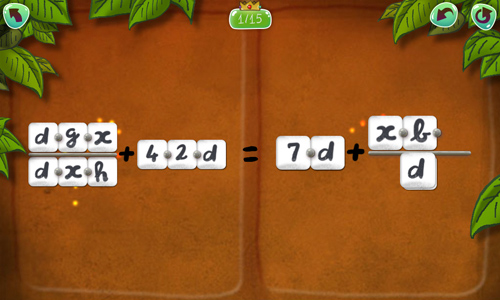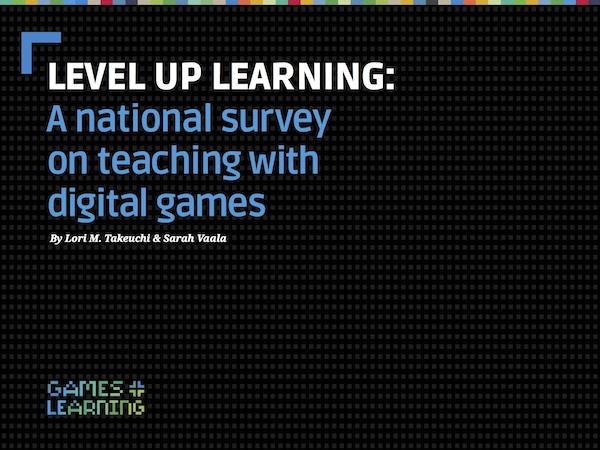The potential of digital games for education is enhanced by the fact that digital games are everywhere. In 2008, the Pew Internet and American Life Project found that 97 percent of those ages 12–17 played computer, web, portable, or console games, and 50 percent of them reported daily or near-daily gameplay. Another Pew study reported that digital games generated $25 billion in sales in 2010.
Studies have demonstrated the potential of digital games to support learning through conceptual understanding, process skills and practices, and by informing players’ attitudes, beliefs, identity, and engagement. Research also demonstrates that not all digital games are equally effective in promoting such development.
What Past Studies Reveal
Recent meta-analyses demonstrate that games can support learning, but that a wide range of design choices and game genres can impact their effectiveness. Reports by the National Research Council’s on games and simulations, as well as other studies on games for learning, have produced similar conclusions:
The design of games determines their efficacy for learning as much as the medium.
This shouldn’t be surprising. Nobody would argue that “all books are good for learning” or that “all lectures are good for learning.” Design and fit determine efficacy. The same is true when using games as a medium for learning.
When conducting the Clark, Tanner-Smith, and Killingsworth (2016) meta-analysis, our team at Vanderbilt University reviewed 69 quantitative studies to evaluate the effectiveness of instruction through digital games versus non-game conditions. Our analysis showed that game-based instruction significantly enhanced student learning relative to non-game conditions.
Furthermore, while the role of design is often de-emphasized in debates over whether digital games are “better” or “worse” for students than traditional instruction, our meta-analysis demonstrated that the design quality of a game is associated with as large or larger of an effect as the delivery medium.
Balancing Engagement and Efficacy
Design matters—and so does fit. We benefit from using the right tool for the job, whether the context is carpentry or education. The design of a game intended for learning needs to align with the goals of the curriculum and the interests of the students.

Kids enjoy a wide variety of games, particularly when the games are in the school setting. In distributing a series of physics games developed by my research lab, we found that students were excited to play our games, even though the games were not as polished or high-tech as expensive commercial titles. Similarly, recreational “retro games” emulating the look and feel of pixilated games from the ’80s and ’90s are also popular commercially. Clearly, digital games don’t need to be cutting edge visually to be engaging in schools. But can they be effective?
In our 2016 meta-analysis, we found the same or higher efficacy for games that featured simpler visual design elements when compared to games that were more complex visually. This finding parallels a 2013 quantitative meta-analysis of digital games and learning by Wouters and colleagues. Both studies found schematic games were more effective than cartoon-like or realistic, serious games. Fancier graphics can actually distract students depending on the learning goals. Our meta-analysis reviewed broad design sophistication to demonstrate both simple and complex game mechanics can prove effective.
A Controlled Study Using Games Integrated into Curricula
One critical finding of the meta-analysis was the importance of substantial integration and exposure to the educational games in order for learning to be effective. Studies featuring multiple gameplay sessions demonstrated stronger learning outcomes than those with only a single gameplay session. As such, in-class curricula that integrates digital games over multiple days should prove more effective than single-day activities.
Building on our research from the meta-analysis, we collaborated with Legends of Learning to study the efficacy of integrating typical educational games across an extended curriculum. The study compared results from more than 1,000 students of 13 teachers in 10 diverse urban, suburban, and rural schools. Teachers integrated a set into their existing curricula on Jacksonian democracy.
The games developed for the pilot study are typical in the sense that they’re similar to other educational games one might see in a school environment. Developed for Android tablets, none of the games were high-tech or big-budget commercial games. The games were designed, however, to support the learning goals of the curriculum, which focused on the social studies topic of Jacksonian democracy. Many of them incorporated simple game mechanics typical of other recreational games found on tablets, and none involved bare gamification through points or badges added to worksheets.
Teachers integrated the games into their classrooms for at least three weeks of instruction and designed the rest of the curriculum as they saw fit. Each teacher taught at least one class with the games and at least one class without the games.
The results showed significantly higher gains for the game condition in terms of multiple-choice, open-response factual outcomes, evidentiary depth, and student engagement outcomes. (We excluded the one teacher who reported a failed implementation.) The game condition resulted in higher scores for all outcomes, and student engagement and evidentiary depth remained significant.

Teachers reported in surveys and interviews that students were more highly engaged in their game classrooms. In addition, the games were particularly beneficial for special education students and students who were typically less engaged. Ninety-two percent of the teachers strongly agreed or agreed with the survey question that they would like to use games like the ones in the study in the future. Teachers on average said that they would want to use games for 32 percent of their instructional time in the future, with answers ranging from 17 to 50 percent. Teachers were highly favorable toward continuing to use similar games in their curricula if available.
Our findings demonstrate that typical educational games, when carefully coordinated with learning goals, do support significant learning and increased engagement.
The impact of games depends on the quality of their design and the alignment of their design with the curricula’s learning objectives. What really matters is the design of the games, their alignment with the learning goals of the curriculum, and ongoing, extended opportunities for students to interact with the games. Games do not need to be elaborate for learning to be effective.
 Doug Clark, professor of the learning sciences and science education at Vanderbilt University, investigates the learning processes through which people, particularly middle school and high school students, come to understand core science concepts in the context of digital learning environments and games. This work focuses primarily on conceptual change, inquiry, modeling, explanation, collaboration, and argumentation.
Doug Clark, professor of the learning sciences and science education at Vanderbilt University, investigates the learning processes through which people, particularly middle school and high school students, come to understand core science concepts in the context of digital learning environments and games. This work focuses primarily on conceptual change, inquiry, modeling, explanation, collaboration, and argumentation.



